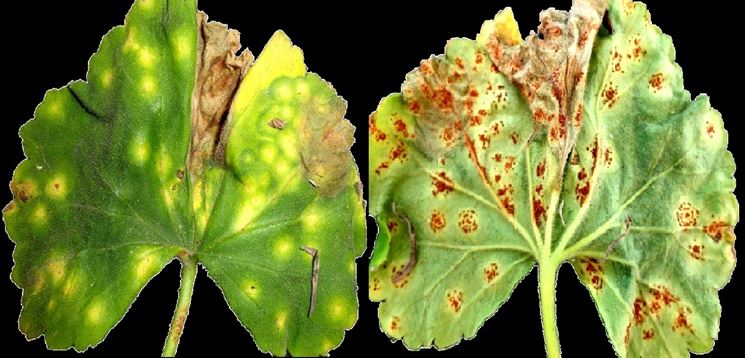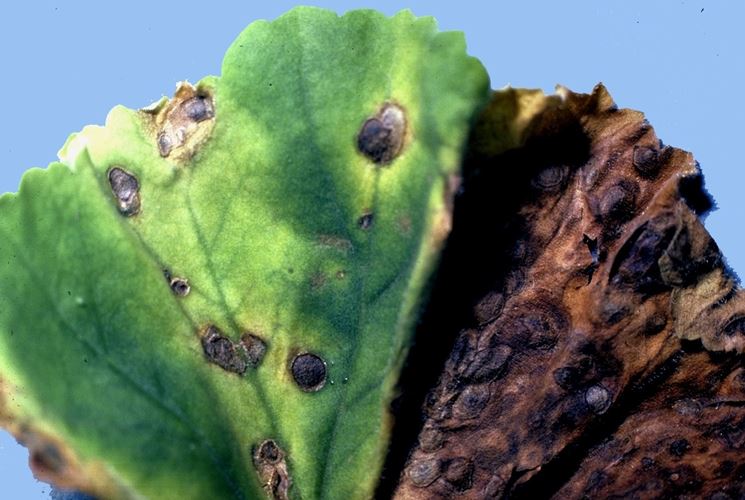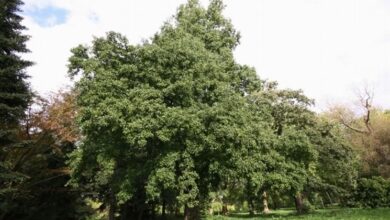Diseases of geraniums

Basic rules for healthy and strong geraniums

Unfortunately, geraniums are often victims of annoying parasitic insects such as mites, aphids and whiteflies, which suck their sap and leave a viscous secretion on the leaves, which in turn is dangerous because it attracts other pests. To eradicate them, use specific products at the first appearance that also eliminate the larvae. Among the aphids we remember the Myzus persicae, small and green in color, which attacks and deforms the young plants, the vegetative apexes and the floral buttons. Among the mites, Tetranychus urticae or red spider mite is particularly widespread, which causes yellowing on the upper page of the leaves which take on a bronzed appearance, then dry up and fall. It is possible to identify small orange-yellow insects on the underside of the leaves with two dark spots on the sides of the body. The white fly,
Diseases of geraniums caused by plant parasites

Diseases of geraniums of fungal origin are often caused or at least favored by an environment that is too humid and stagnant water, therefore they can be prevented by using simple precautions such as using a well-drained soil, avoiding evening or excessive wetting. Once the disease occurs it is necessary to eliminate the affected parts, reduce watering and fertilization and intervene on the plant with specific products. If we observe on the upper page of the leaves some yellow spots and in correspondence on the lower one pustules of 5-8 mm that produce a brown-red powder we are in the presence of rust. Another fungus that attacks geraniums, usually in early spring, is Botrytis cinerea or gray mold, which covers the flowers and leaves from the edge towards the inside and slowly makes them rot. If action is taken promptly, the plant can be saved. If it is Pythium that attacks, necrosis and bright black rot occurs in particular at the roots, usually young seedlings are affected.
Diseases of geraniums: The most feared disease: the relentless bacteriosis of geranium

Among the diseases of geraniums, the most feared is bacteriosis against which unfortunately there is little to be done, is caused by the bacterium Xanthomonas campestris pv pelargonii. The main symptom is a browning of the triangle-shaped leaves with the tip facing inwards, which first makes them almost dry out and then inexorably fall; the umbrella folding is also characteristic, especially on older leaves. In the area near the collar, the stem has a dark area. Often the disease is caused by poorly performed pruning or the use of dirty tools that are not properly sterilized. First of all, it is necessary to remove the infected plant from the others to prevent contagion and replace the soil before inserting new plants; it can help to administer copper-based products,




